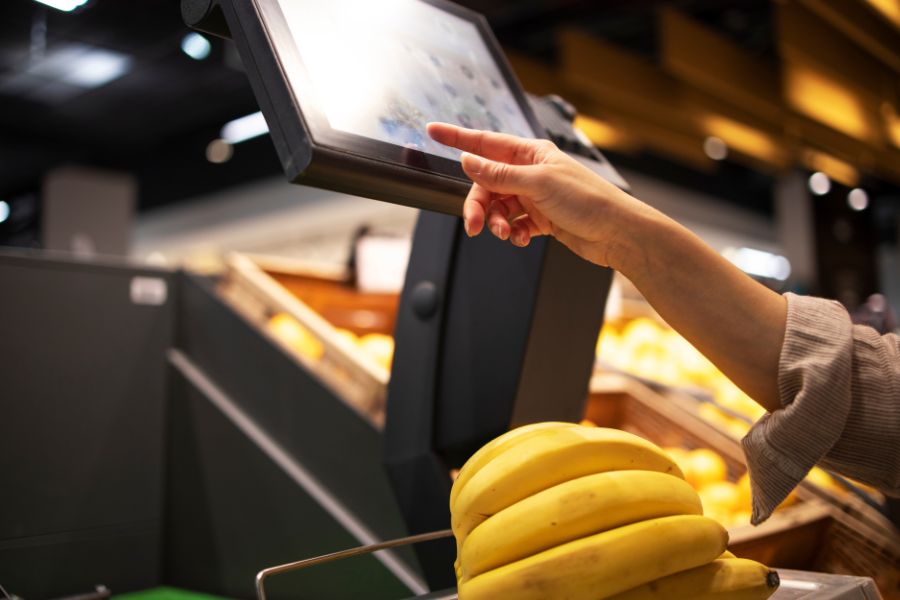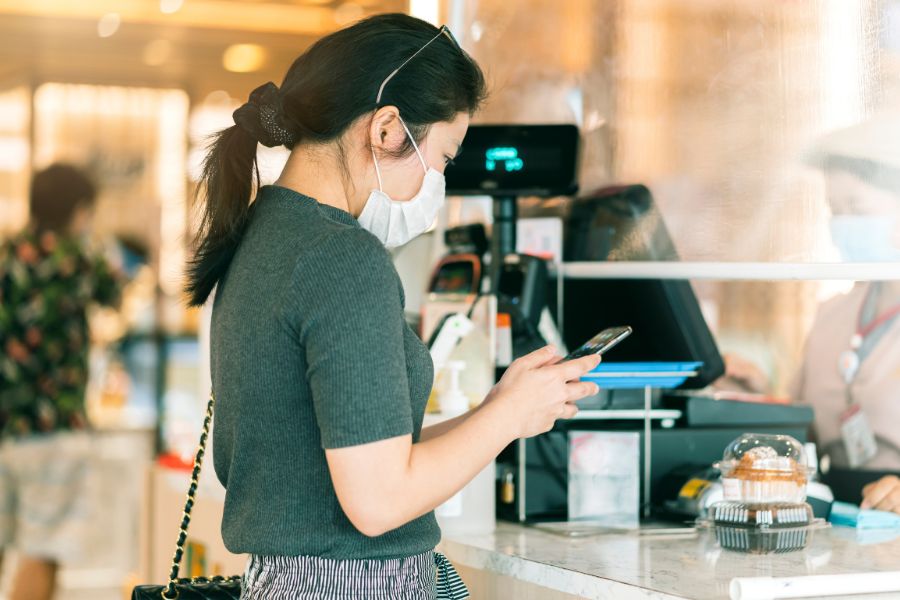The retail landscape in Thailand continues to grow, pushing businesses to select the right tools for success. A NetSuite Point of Sale (POS) system represents a key investment for Thai retailers who want to modernize their operations. Choosing the best Netsuite POS system Thailand requires understanding specific elements that match your business needs and local market requirements.
This guide examines the fundamental aspects to consider when picking a NetSuite POS system in Thailand. We’ll focus on the capabilities that matter most for Thai businesses, helping you make an informed decision that aligns with both your current needs and future business goals.
Highlights:
- A NetSuite POS third-party solution is a point-of-sale system that integrates with NetSuite ERP, so retailers can sync sales, inventory, and customer data in real time while offering more flexibility than NetSuite’s native POS.
- When selecting a NetSuite POS for Thailand, key features to look for include local payment gateway support, offline mode, multi-store management, real-time inventory syncing, and omnichannel capabilities to keep operations running smoothly.
What is a Netsuite POS System?
NetSuite POS System (SuiteCommerce InStore) combines standard point-of-sale functions with real-time inventory and customer data. Store staff can process regular transactions like cash sales, returns, and exchanges while checking current stock levels across locations.
The system connects online and in-store shopping. Customers can access their online cart items or wishlists during store visits and include them in their purchases. They can also save in-store items to their online wishlists for later. The integrated inventory view lets customers buy products in-store and ship them anywhere. Store staff can handle returns and exchanges for purchases made through any sales channel – online or other store locations.
Sales staff can move freely throughout the store using mobile POS devices with touch screens. They can check stock levels instantly and view each customer’s purchase history and interactions, helping them suggest matching products.
NetSuite connects physical stores with online shopping by combining SuiteCommerce and SuiteCommerce InStore. This creates one system for managing products, inventory, customers, and orders across both channels.
Fundamental Features When Selecting A Netsuite POS System in Thailand
A NetSuite-integrated POS system helps Thai retailers connect in-store sales, inventory, and customer data with their NetSuite ERP. While NetSuite’s native POS (SuiteCommerce InStore) is an option, many businesses prefer third-party POS solutions like ConnectPOS SEA that provide more flexibility, local payment support, and advanced features. Here’s what to look for when selecting a POS system that works with NetSuite in Thailand.
Seamless NetSuite Integration
A strong NetSuite POS system should sync sales, inventory, and customer data in real time, keeping everything updated across all stores and online channels. Look for a solution that connects smoothly with NetSuite ERP, avoiding manual data entry and reducing errors.
Mobile POS for Flexible Sales
A mobile POS lets staff process transactions anywhere in the store using tablets or handheld devices. This speeds up service, reduces checkout lines, and improves customer engagement by letting employees assist shoppers directly on the sales floor.
Local Payment Gateway Support
Thailand’s retail market relies on QR payments, PromptPay, credit cards, and e-wallets like TrueMoney and Rabbit LINE Pay. A NetSuite-compatible POS must support these payment methods to meet customer expectations and ensure smooth transactions.
Multi-Store and Omnichannel Management
Retailers operating multiple locations need a POS that syncs inventory and sales across all stores and online channels. Features like click-and-collect, ship-from-store, and cross-store returns help businesses provide a better shopping experience.
Advanced Customer Insights
A NetSuite-integrated POS should offer detailed customer profiles, including purchase history, preferences, and loyalty program data. This allows staff to make personalized recommendations, improving customer engagement and increasing sales.
Real-Time Reporting and Analytics
A POS system for NetSuite should provide live sales tracking, inventory monitoring, and performance reports. Retailers can use this data to make informed decisions, adjust stock levels, and optimize store operations.
Tips to Choose The Best NetSuite POS System
The right NetSuite POS system can improve your business operations and data accuracy. A well-planned implementation leads to better workflow and higher productivity.
- Clear Goals
Start by listing your business needs and expected outcomes from the POS system. Map out which business areas need improvement and how the system will affect each process. Setting clear targets before implementation helps measure success later. This preparation allows you to track progress and compare results against your original goals.
- Consider Scalability
Your POS system should grow with your business. Pick a system that can handle increased data loads and new functions as your company expands. The right system adapts to changing business demands without requiring major updates or replacements.
- Evaluate Security Protocols
Data protection must be a top priority when selecting a POS system. Look for strong security features and compliance with industry standards. Check that all system components use proper encryption to protect sensitive business and customer information.
- Conduct Cost Analysis
Calculate all expenses related to the POS system, including monthly fees and setup costs. Compare these costs against the expected business benefits. A thorough financial analysis helps determine if the investment makes sense for your company.
- User-Friendly
Select a POS system with straightforward controls and simple setup steps. An easy-to-use system speeds up staff training and daily operations while keeping implementation costs low.
ConnectPOS SEA for Netsuite POS System Thailand
Why Consider a Third-Party POS for NetSuite?
While SuiteCommerce InStore is NetSuite’s built-in POS, many Thai businesses prefer third-party NetSuite-integrated POS solutions like ConnectPOS SEA for greater flexibility. It supports local payment gateways, offline transactions, and customizable workflows, making it a better fit for Thailand’s retail market.
How ConnectPOS Works with NetSuite
ConnectPOS SEA seamlessly integrates with NetSuite ERP, helping retailers in Thailand manage sales, inventory, and customer interactions in real time. The system tracks customer purchase history and shopping behavior, allowing stores to deliver personalized service and targeted promotions that improve customer loyalty.
Unlike standard POS solutions, ConnectPOS SEA offers direct integration with multiple payment providers – without extra transaction fees. This ensures businesses can accept PromptPay, credit cards, mobile wallets, and other local payment methods without additional costs.
Key Features of ConnectPOS for NetSuite:
- Device Flexibility – Works on PCs, tablets, and smartphones, giving businesses the freedom to run their POS on any setup.
- Online & Offline Mode – Keeps sales running even when the internet goes down, ensuring smooth operations at all times.
- Multiple Payment Options – Supports cash, credit cards, e-wallets, QR payments, and mobile transactions, catering to Thai shoppers’ preferences.
- Self-Checkout with PWA App – Customers can scan and purchase items themselves, reducing wait times and improving the in-store experience.
- Customizable Receipts – Print or email receipts with store branding, logos, website links, and location details to match business needs.
- Omnichannel Syncing – Connects physical stores with eCommerce, keeping inventory and orders updated across all sales channels.
- Multi-Store Management – Track and manage stock, sales, and staff performance across different store locations from a single system.
- Advanced Reporting & Analytics – Get real-time insights on best-selling products, peak sales periods, and customer trends to make data-driven decisions.
In Conclusion
A Netsuite POS system Thailand can transform your retail business in Thailand. The right choice brings better inventory control, smooth sales processes, and happy customers. It helps you manage daily operations while giving you clear data about your business growth.
For Thai retailers using NetSuite ERP, ConnectPOS SEA provides a reliable and feature-rich POS system that improves sales operations, simplifies payments, and enhances customer service. With local payment support, offline mode, and real-time data syncing, it’s a strong choice for businesses looking to scale efficiently while keeping operations smooth. Want to explore if ConnectPOS is the right solution for you? Contact us today.
FAQs: NetSuite POS System Thailand
Does NetSuite have POS?
Yes. NetSuite’s POS system, SuiteCommerce InStore, lets you sell products both in stores and online through one platform. It includes tools for managing inventory, customer data, and business reports. The system works on any device you choose.
How much does NetSuite cost?
NetSuite prices range between $25,000 and $100,000. The final cost depends on your company size and which parts of the system you need. This investment helps improve your business management and operations.
Is NetSuite a payment gateway?
No, but NetSuite works with many payment solutions through SuitePayments. You can find these pre-integrated payment partners on SuiteApp.com. These solutions help you process customer payments in different ways.





